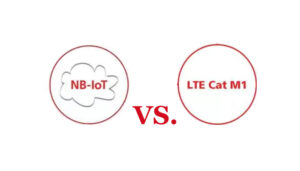Today’s smart home automation is becoming a ubiquitous technology. From drawing the curtains in the morning to adjusting the lights in a room according to your mood, smart homes are becoming an integral part of our daily lives. Allowing us to monitor what’s happening in the house using our phones/Ipad or laptops.
Thanks to advances in artificial intelligence and the IoT ecosystem, appliances and devices are able to mimic everyday life, and this is just the beginning. Smart home automation is not a vision or a fantasy, but a new reality. In the next few years, the concept of the ideal smart home will change the way humans interact with all appliances and devices.
Devices equipped with sensors will know if the activities going on in a room are normal or if they are causing any discomfort to the occupants. Once touted as exclusive to the super-rich, smart devices are now easily accessible to most people in the city.
Today, customers seek out smart home solutions because of the many benefits they offer users, from energy efficiency, security, and convenience to advanced aesthetics. Homes are now not only automated but can intelligently predict consumer habits and use artificial intelligence to create automated applications.
Factors that pave the way for connected living with smart home automation
Today, Asia Pacific is the fastest-growing region in the global smart home market. Take India, for example, where the adoption of smart home technology has transformed the lives of 1 billion people through smart devices and appliances. With a growing urban middle class and increasing disposable income, spending on smart home products is growing exponentially.
Market demand is combined with a number of key advancements that are helping the overall IoT market, including affordable connectivity and smartphone penetration across the country.
According to a Statista report, the Indian smart home market is expected to reach around $6 billion by 2022, double the $3 billion estimated in 2020. Globally, this figure is expected to reach $53.45 billion by 2022.
The smart home market in India is expected to see rapid growth, with the Indian government embracing this lucrative opportunity through large-scale initiatives such as smart city projects, with a budgeted expenditure of $31 billion for the period 2015 to 2022. A young population and aspiring background, coupled with affordable pricing are driving the smart home automation concept in the Asia Pacific.
Why is Smart Home Automation?
Pandemics have changed everything about us in many ways, whether it’s the way we work or interact or the way we go about our daily lives. In addition, with people staying indoors more than ever before, the pursuit of convenience, safety, and comfort through integrated technology products has become a consumer imperative.
Today, consumers prefer home appliances or devices that are smart, connected, and energy-efficient. As a result, they not only want to enrich their lifestyles with smart products such as smart outlets, switches, and smart gadgets but also want to reduce the total cost of ownership.
Many well-known brands are introducing wireless solutions designed for a variety of existing homes, creating a pathway for consumers to turn old appliances into smart ones for a fraction of the cost. Some of the top wireless solutions are equipped with interface capabilities, which allow for hybrid installations in buildings where new structures are added that can be used with wired automation. Older buildings can be automated using wireless solutions, but still, sit on the same platform. Wireless solutions are a boon to existing structures, allowing easy adoption of automation without any electrical or structural changes to the existing structure.
Today, in this unprecedented era, voice technology in products has become a blessing for children and seniors in the home. The older generation is less inclined to use electronic devices due to the availability of voice assistants that can issue commands or add reminders to common tasks, thus greatly increasing accessibility.
Consumer willingness to adopt connected home ecosystems is on the rise as they realize the benefits of cost savings through energy efficiency, home monitoring capabilities from remote locations, increased comfort and convenience, and an enhanced sense of quality in the home.
Smart home ecosystems represent the future, anticipating one’s needs and providing consumers with a different way of living that is more connected, more convenient, and smarter, and will have the ability to integrate into the smart cities of the future. As we enter a new normal, innovation is bound to increase.
Focusing a significant amount of attention on R&D will become increasingly important for any product company working to deliver real-world solutions. Innovation will not only make products smarter, but it will also create an ecosystem conducive to growth and investment.
Besides the Why Smart Home Automation article, you may also be interested in the below articles.
PCB Antenna VS. External Antenna
Ceramic Antenna VS. PCB Antenna, A Comparison Guide
Wifi vs. 5G, is 5G better than Wifi?
Mobile Networks’ Evolution From 1G To 5G




